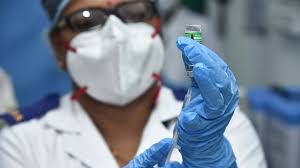Austrian Institute for Health Technology Assessment (AIHTA) has raised significant concerns about the lack of transparency in the funding of medical research and drug development, calling attention to the vital contributions made by the public sector. The AIHTA, under the leadership of Priv. Doz. Dr. Claudia Wild, is shedding light on an overlooked aspect of medicine production: public investments. Using antibiotics as an example, the institute reveals that without subsidies and grants, many essential medicines would not exist.
“Public sector contributions are fundamental to medical innovations,” says Dr. Wild, emphasizing that future EU regulations will demand pharmaceutical companies disclose the public funding that has gone into the development of their products, from basic research to market access.
The AIHTA’s goal is to equip health insurers and authorities across EU member states with guidelines to negotiate drug prices more effectively. By the end of 2025, the institute aims to provide a comprehensive manual to assist regional hospitals and social insurance organizations in Austria. The tool will guide officials on how to request relevant data from manufacturers or conduct their own investigations.
The research has already been tested in Italy and France with encouraging results, and the first phase of the study on antibiotics is now complete. Published in Health Policy, the study reveals that public investments have played an essential role in the development of antibiotics, a drug group struggling with market failure.
The industry is less incentivized to develop new antibiotics due to their limited market potential: they are used only in emergencies and are effective against a narrow range of pathogens. This lack of profitability has led the public sector to step in, funding research that private industry would otherwise avoid.
The AIHTA’s study found that, out of 27 new antimicrobial agents authorized since 2014, 10 were developed by small and medium enterprises (SMEs), which often rely heavily on public funding. Public funds were critical in every stage of development, from university research to clinical trials. Wild notes, “Almost all basic research is carried out by the public sector, with universities often driving the initial stages and private companies stepping in only in later stages when the risks are minimized.”
In the case of the antibiotic Venatorx, for example, public sector investments totaled US $655 million, dwarfing private funding of just $45 million. This stark contrast highlights the financial risk borne by the public sector, often with little recognition in the public debate.
However, Wild points out a significant issue: the lack of transparency in how public funds are used. There is no clear reporting structure detailing the flow of funds, which obscures the vital role played by the public sector. “The narrative that only pharmaceutical companies are innovators, and that high drug prices result from the risks they bear, is misleading,” Wild states.
While the European Union has a transparent system in place, such structures are still absent at the national level in Austria and other member states. AIHTA’s findings point to the urgent need for a transparent, structured approach to tracking and reporting public contributions to drug development, to ensure that the public sector’s financial commitment is properly recognized.
As governments and health systems around the world grapple with rising drug costs, understanding the contributions made by public funding to the development of essential medicines is crucial for more informed and equitable pricing negotiations. The AIHTA’s efforts to promote transparency could pave the way for more effective, fairer systems in drug pricing and distribution across Europe.
For more details, refer to Health Policy, 2024, where the full study is published.
Reference: Claudia Wild et al, Public contributions to R&D of medical innovations: A framework for analysis, Health Policy (2024). DOI: 10.1016/j.healthpol.2024.105235












